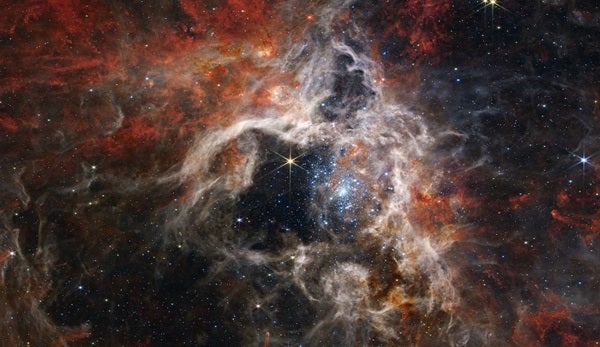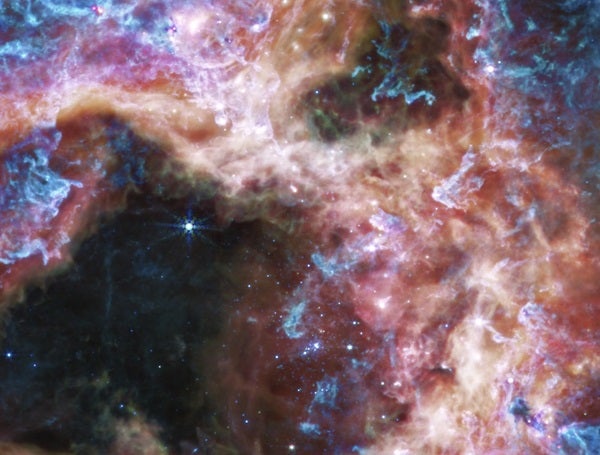Arachnophobes beware, for nestled within the Large Magellanic Cloud lurks the Tarantula Nebula. And this cosmic arachnid is giving birth to hundreds of thousands of babies.
A mere 161,000 light-years distant, the Tarantula Nebula is both the largest and brightest star-forming region in our Local Group of galaxies. So, it’s no surprise that when NASA’s James Webb Space Telescope zoomed in on the region, it found a stellar egg sac in the Tarantula’s burrow.
Intense radiation from these massive stars has carved out a cavity in the dense nebula. Tucked inside some of the pillars of gas and dust that have withstood the stellar onslaught are protostars — young stars still feeding off their parent cloud. JWST caught sight of one of these protostars just beginning to emerge from its pillar, still swathed in an insulating cloud of dust. Soon (astronomically speaking, of course) this star will emerge from its cocoon, leaving its own mark on the nebula.











